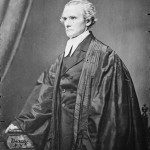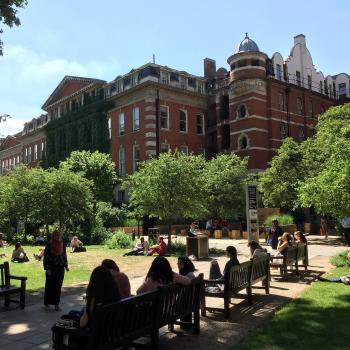
I was out of the house for a substantial part of Saturday, and the power at our house was out for an even longer part of the day, and then it went out again, and then again, and then yet again — and, finally, I lost count, and I don’t know whether there were any further power outages throughout the night nor how many of them there might have been. All of that cut into my productivity just a bit. So I think that I’ll content myself for the moment by sharing a selection from the notes that I marked during my reading, quite a while back now, of Sebastian Junger’s In My Time of Dying: How I Came Face to Face with the Idea of an Afterlife (2024).
Junger is a respected war correspondent as well as the best-selling author of such books as The Perfect Storm. For most of his life, he was a confirmed atheist. (He had been raised by his father, a physicist, to trust only what he counted, rather naïvely in my view, as “empirical facts.”) I’m not exactly sure whether he’s still an atheist or not — I think that he probably is — but, in this book, he tells about what happened to him on a quiet afternoon in the summer of 2020 while he was at home in New England with his wife and his two young children.
Suddenly, he was assaulted by acute abdominal pain. As it later turned out, he had suffered a ruptured aneurysm that, in most instances, would have proved fatal. (In his case, obviously, it didn’t. After all, he returned and wrote his book.) Despite being rushed to the hospital, he began to fade and, as blackness gathered, Junger’s dead father visited him. His father invited Junger to join him. “It’s okay,” his father told him. “There’s nothing to be scared of. I’ll take care of you.” Until Junger returned to consciousness the next day, that was the last thing that he could remember.
Anyway, here are a few of the passages that I marked during my reading of In My Time of Dying:
Around one quarter of near-death survivors report encountering the dead, as I did. Some were long-dead relatives, some were the recently dead, and some were not yet known to have died. One American soldier responded to an appeal in military publications for near-death experiences with this account of a helicopter crash in Vietnam: “It was peaceful and cool. I could see others like myself just sort of floating around only inches from the ground . . . dead [Viet Cong]. Our eyes meet, but there are no hard feelings between us, just something we have in common… people walk past you, and you know what they are thinking . . . we all have the same thing in common . . . we are dead.” (105)
Junger cites the arguments of Christof Koch, a German-American cognitive scientist, neurophysiologist, and computational neuroscientist and a formerly a professor at the California Institute of Technology, who contends against the objective reality of near-death experiences and the idea of an immortal soul. Junger seems, I think, to sympathize with Koch’s position, but he does survey some of the counterarguments. He specifically mentions a case that I myself find remarkable and persuasive:
For NDE believers, the ultimate refutation of Koch’s gentle skepticism is the case of a thirty-five-year-old musician named Pam Reynolds. In 1991, Reynolds was diagnosed with a basilar artery aneurysm so deep in her brain that surgeons could not access it with conventional means. It was a death sentence, so surgeons resorted to a rare and high-risk procedure called hypothermic cardiac arrest. The plan was to lower her body temperature to 50 degrees Fahrenheit to prevent tissue decay, stop her heartbeat and breathing, drain the blood from her head, saw open her skull, excavate her brain to the depth of the aneurysm, repair the artery so that it would not rupture, and then reverse the process until Reynold’s heart could be jump-started with a defibrillator. Reynolds was given general anesthesia, her eyes were taped shut, and Dr. Robert Spetzler started his bone saw and cut a section out of her skull. A surgical microscope was inserted deep into her brain, to the site of the aneurysm. Her heart was stopped, her body was chilled, and the blood was drained from her head by gravity. At that point, all brain waves ceased, and her EEG went flat. The operation was a success, but after Reynolds woke up in the ICU, she had the strangest things to report. She said that despite the general anesthesia, she was brought back to awareness by the sound of the cranial saw, and that she had then slipped out the top of her head and looked down from the surgeon’s shoulder. At some point she overheard a conversation between doctors about trying to establish a vascular entry point in her groin, which surprised her, because she knew that the surgery was nowhere near that area. Later she encountered dead relatives, including her uncle, who urged her to slip back into her mangled body. She saw her body “jump” twice—supposedly the two defibrillator shocks—and later found herself returning to consciousness in the recovery room. (106-107)
This is just one of many accounts of the Pam Reynolds case. It has been written about a great deal, and many critics have sought to dismantle it as evidence for genuine out-of-body experiences or the survival of consciousness after death. I will eventually be writing about it myself. (I do not find the counterarguments against it convincing.) But here is a counterargument that Junger himself mentions:
According to Reynolds’s anesthesiologist, however, there is no way to know at what point Reynolds had her experiences. If her brain had zero blood perfusion and her EEG was flat, it is medically impossible for her to have any thoughts or memories. Far more likely, in their view, is the possibility that her memories came from a period of semiconsciousness before and after anesthesia, during which she might have overheard the surgical team discussing the details of her surgery. (106-107)













